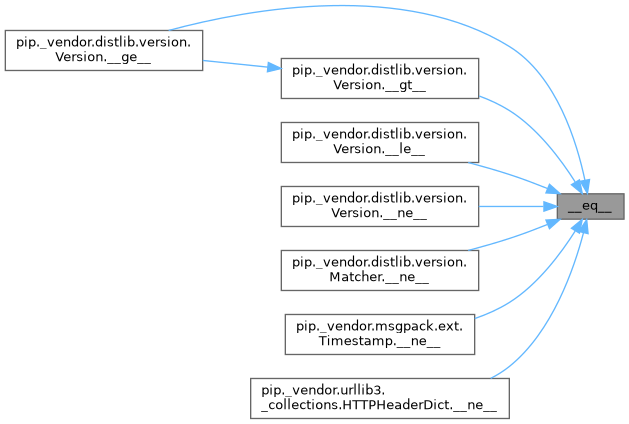Loading...
Searching...
No Matches
HiddenText Class Reference
Public Member Functions | |
| None | __init__ (self, str secret, str redacted) |
| str | __repr__ (self) |
| str | __str__ (self) |
| bool | __eq__ (self, Any other) |
Data Fields | |
| secret | |
| redacted | |
Detailed Description
Constructor & Destructor Documentation
◆ __init__()
| None __init__ | ( | self, | |
| str | secret, | ||
| str | redacted | ||
| ) |
Definition at line 536 of file misc.py.
536 def __init__(self, secret: str, redacted: str) -> None:
537 self.secret = secret
538 self.redacted = redacted
539
Referenced by Protocol.__init_subclass__().
Here is the caller graph for this function:

Member Function Documentation
◆ __eq__()
| bool __eq__ | ( | self, | |
| Any | other | ||
| ) |
Definition at line 547 of file misc.py.
547 def __eq__(self, other: Any) -> bool:
548 if type(self) != type(other):
549 return False
550
551 # The string being used for redaction doesn't also have to match,
552 # just the raw, original string.
554
555
References i, and HiddenText.secret.
Referenced by Version.__ge__(), Version.__gt__(), Version.__le__(), Version.__ne__(), Matcher.__ne__(), Timestamp.__ne__(), and HTTPHeaderDict.__ne__().
Here is the caller graph for this function:

◆ __repr__()
| str __repr__ | ( | self | ) |
◆ __str__()
| str __str__ | ( | self | ) |
Definition at line 543 of file misc.py.
543 def __str__(self) -> str:
544 return self.redacted
545
References HiddenText.redacted.
Field Documentation
◆ redacted
| redacted |
Definition at line 538 of file misc.py.
Referenced by HiddenText.__str__().
◆ secret
| secret |
Definition at line 537 of file misc.py.
Referenced by HiddenText.__eq__().
The documentation for this class was generated from the following file:
- /home/liwuen/projects_dev/pqc-engineering-ssec-23/venv/lib/python3.12/site-packages/pip/_internal/utils/misc.py